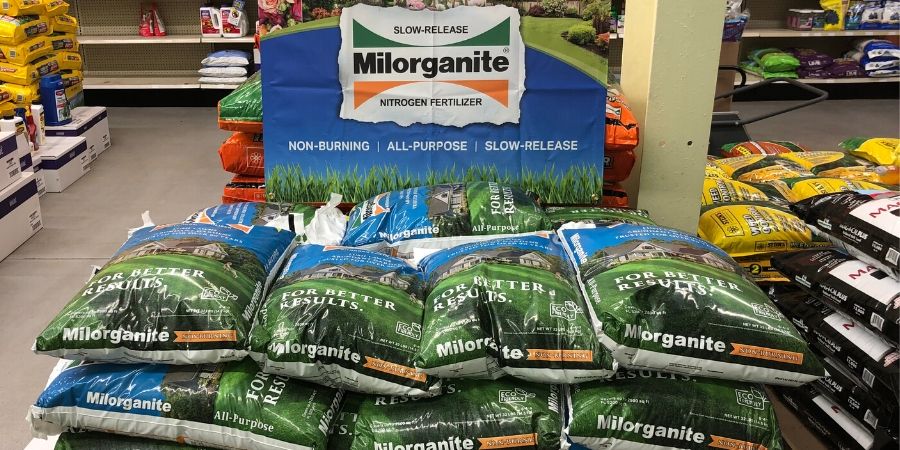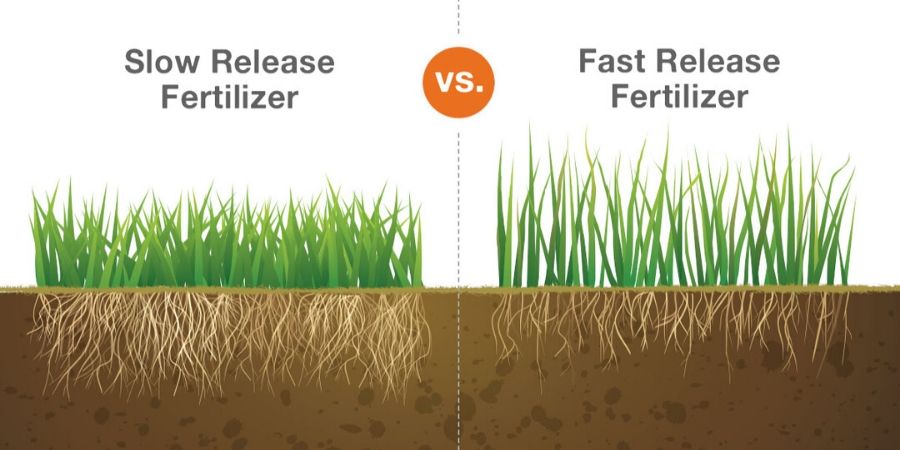The Basics of Fertilizing Your Lawn with Milorganite
- Milorganite AgronomistMarch 14, 2020
Milorganite gets a lot of questions regarding lawn fertilization. (Imagine that!) There are a few questions that customers ask fairly often. We figured for every customer that asks a question, there are likely many others who have the same question, but haven’t asked. Here are three frequently asked questions and their answers.

When Is the Best Time to Fertilize My Lawn?
This is actually two questions wrapped into one: “When should I apply Milorganite?” and “How many times a year should I apply Milorganite?” The best time and how often to fertilize your lawn depends on the grass variety and local climate.
Northern, cool-season grass varieties, such as Kentucky bluegrass, Fescue, and Perennial Ryegrass, should be fertilized four times a year. It’s easy to remember when to fertilize by using our “holiday schedule.” In the North, you’ll want to fertilize around Memorial Day, July Fourth, Labor Day and Thanksgiving. The last fertilizer application in fall, the “dormant feeding,” should be done as late in the season as possible, but before the first deep freeze or snowfall. You’ll notice your lawn greening-up faster in spring.
Southern, warm-season grass varieties, such as Bermudagrass, St. Augustinegrass and Zoysia grass, need the warmer temperatures of the South and West to thrive, should also be fertilized four times annually, but not on the same schedule as cool-season grasses.
Fertilize warm-season grasses with Milorganite around Easter, Memorial Day and Labor Day, with the last application in early-October. (Does anyone know of an early-October holiday?) Centipedegrass and Bahiagrass are the exceptions. Fertilize these varieties only twice every year in spring around Easter and again around Labor Day.
Warm-season grass varieties should not be fertilized in late fall. Encouraging growth while the grass is going dormant makes it more susceptible to winter injury. The latest in the season warm-season grasses should be fertilized is one month prior to when the grass generally goes dormant or one month before the first killing frost, which you can determine here. In warmer areas where warm-season grasses don’t go dormant, fertilize in early-October.
If you live in the transition zone, where both cool-season and warm-season grass varieties may grow, depending on the local climate, it’s important to identify which grass varieties you have and fertilize accordingly.
No matter what variety of cool-season or warm-season grass you have, Milorganite is ideal for fall fertilization. In the north, we recommend applying Milorganite around Labor Day and once again around Thanksgiving, before the first major freeze or snowfall. In the south, apply Milorganite around Labor Day and again in early-October. You can also fertilize in conjunction with overseeding, which replaces fall fertilization. Check with local ordinances for fertilizer blackout dates.
Can I Apply Milorganite with Other Lawn Fertilizers?
Yes, in addition to Milorganite, you can apply multiple fertilizers and amendments to your lawn, but you have to read all of the product labels. If you’re not careful, you could apply more nutrients than your lawn actually needs, increasing the risk of damaging your lawn and nutrient runoff. If you’re applying a synthetic fertilizer, you also risk burning your lawn.
Please don’t apply too much fertilizer. Read the labels and do the math, or better yet have a soil test taken!
Can You Apply Too Much Milorganite?
Yes, it’s possible to apply too much Milorganite, just as it is with any fertilizer, but with Milorganite, you’re not going to face the same consequences.

Sometimes we have to be patient. If you’re tempted to apply more Milorganite than recommended, because you think it’ll green-up your lawn faster, please don’t. Applying more won’t speed things along. The nutrients in Milorganite are released slowly over 8–10 weeks, so your lawn will get the nitrogen and greening iron it needs for at least two months. Synthetic fertilizer may green-up your lawn faster, but for a much shorter period.
You may be surprised to learn that applying too much nitrogen can actually weaken the grass. It encourages blade growth, but not root growth.
Patience, my friend. Milorganite will green-up your lawn, just give it a little time.
Applying too much fertilizer can also harm the environment. Excess nutrients may be washed away and pollute area waterways. This is particularly true for quick-release, synthetic fertilizers.
Even if you accidentally dump a bag of Milorganite on your lawn while filling your spreader, you’re STILL not going to kill the grass! Simply scoop up as much Milorganite as you can, use a rake or stiff broom to distribute any remaining product and walk away. There’s no need to worry. Milorganite won’t burn your lawn. (Just be a little more careful next time.)

